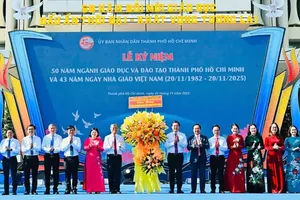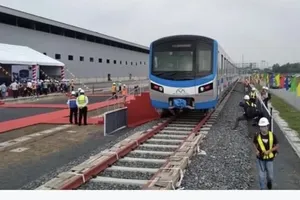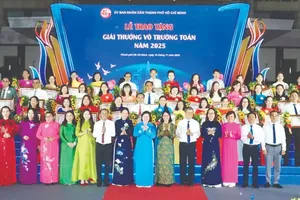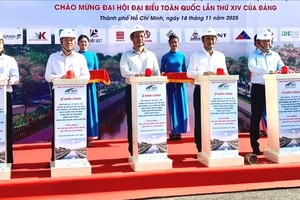
Ho Chi Minh City is currently operating within an outdated institutional framework that no longer matches its scale and complexity. To fully unlock its potential in the digital era, the city urgently needs a stable and flexible legal corridor that can support its evolution into a truly special urban center.
With over 13.6 million people, an area of 6,733 square kilometers, and a GRDP of approximately US$123 billion, Ho Chi Minh City has long surpassed the limits of a provincial-level administrative unit. Yet, its governance structure still follows the province–commune model, causing overlapping policies and impractical management. At the grassroots level, commune officials handle excessive workloads, reporting to multiple agencies. At the departmental level, major projects remain delayed, awaiting guidance from ministries.
Officials and civil servants in communes and wards seemed to be trapped in administrative overload. One official from Tay Nam Ward shared that the sheer volume of paperwork requires them to both serve citizens and digitize records simultaneously, while also managing multiple merged sectors. Their saying, “The work never ends, only the hours do,” captures the immense pressure on the city’s two-tier local administration.
Beyond the heavy administrative burden, the most challenging cases often come from higher-level departments. After recent mergers, staff must handle a large influx of documents, sometimes in unfamiliar fields. Worse, several staff from the Department of Culture and Social Affairs and the Department of Economic, Infrastructure, and Urban Development lack the necessary knowledge and experience to handle dossiers related to sectors they have not previously overseen.
National Assembly deputy Pham Trong Nhan, Vice Chairman of the Ho Chi Minh City Labor Federation, stated that while the two-tier administration model is the right direction, it cannot function effectively without a new institutional framework. He emphasized that the current system was designed for agricultural provinces, where demographics, infrastructure, and urban issues differ vastly from those of a major metropolis.
National Assembly deputy Pham Trong Nhan pointed out an example that in regional planning or population data management, Ho Chi Minh City still faces multiple layers of ministerial approval, delaying strategic infrastructure projects. He stressed that a mega-city cannot operate under a provincial agricultural mechanism; therefore, without a distinct legal corridor, Ho Chi Minh City will remain constrained by an institutional framework too tight for its growth, unable to form a dynamic economic triangle among regions.
According to him, both public and private investment projects continue to face difficulties due to overlapping legal regulations. Many procedures still rely on a “petition-and-approval” mechanism, forcing the city to repeatedly request temporary special policies. Consequently, despite being the nation’s economic locomotive, Ho Chi Minh City’s progress remains hindered by regulatory bottlenecks.
According to National Assembly deputy Nguyen Hoang Bao Tran, Deputy Director of the Ho Chi Minh City Department of Science and Technology, the National Assembly's Resolution No. 98/2023, which pilots certain special mechanisms for the city’s development, marks an important step forward but remains limited in scope. The city now needs a long-term, comprehensive legal framework capable of addressing emerging challenges in digital transformation and smart urban governance.
She noted that in urban planning, even minor land-use adjustments require central approval, delaying development projects for years. In digital infrastructure, each department maintains its own isolated data system, unable to share information due to the lack of unified rules on access, security, and data responsibility.
Without a stable and comprehensive legal framework, Ho Chi Minh City risks remaining trapped in a cycle of temporary mechanisms constantly requesting pilot policies, permissions, and guidance. This hinders the establishment of a fully functional digital city. A forthcoming Law on Special Urban Areas should clearly define the city’s autonomy in planning, budgeting, and digital transformation while ensuring transparent oversight from the central government.
The law development must be methodical and synchronized reviewing overlapping regulations, designing a feasible transition mechanism for immediate application after enactment, and establishing a periodic evaluation system to enable timely policy adjustments in response to evolving circumstances.







)
















